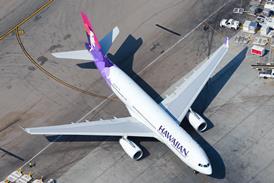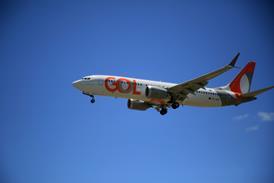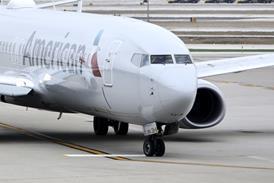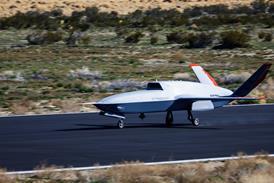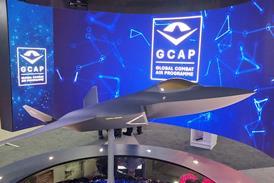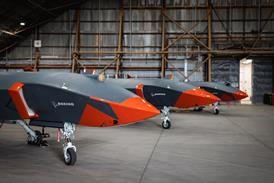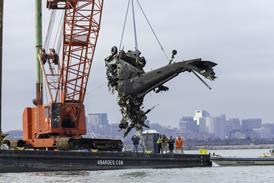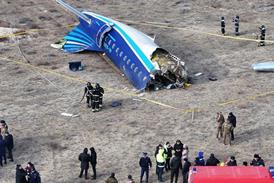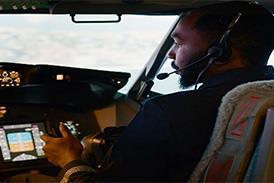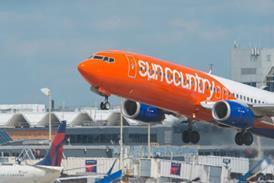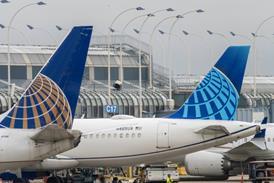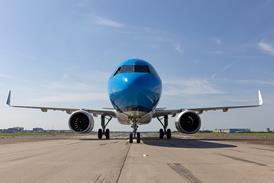Argentina has unveiled the first aircraft in its new fleet of Lockheed Martin F-16 fighter jets.
The inaugural aircraft, a used, two-seat F-16B acquired from Denmark, was displayed in Buenos Aires on 24 February complete with special Argentine air force (FAA) livery.
“One of the best aircraft in the world is now part of the [FAA] fleet to strengthen the defence of our sovereignty throughout the entire national territory,” the Argentine ministry of defence says.
The F-16B was previously seen in Buenos Aires in April 2024, complete with blue-and-white FAA roundels, when officials from Argentina and Denmark signed a $300 million deal covering a 24-aircraft mix of single-seat F-16As and F-16B trainers.
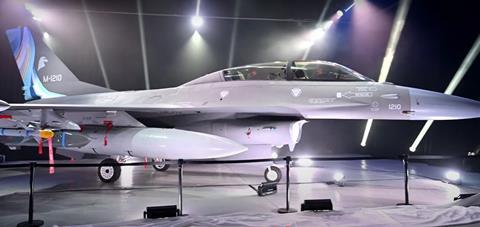
Argentina’s remaining fighters will be transferred from Denmark over four ferry flights starting in December 2025, according to FAA chief of staff Brigadier Gustavo Valverde, Janes reports.
That first tranche will include four F-16As and four F-16Bs. Royal Danish Air Force (RDAF) pilots will conduct the ferry flights, with Argentine pilots riding in the rear of the two-seat B-models.
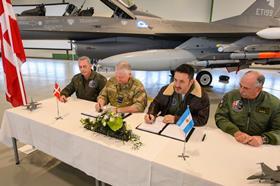
Latin American defence journal Puncara in December reported the inaugural F-16B was delivered to Buenos Aires by an RDAF Lockheed Martin C-130J transport.
“We are recovering supersonic capacity, projecting our armed forces into a new era and protecting the Argentine people more and more,” the Argentine defence ministry says.
Buenos Aires has for years sought replacements for the 16 Dassault Mirage III fighters it retired in 2015.
However, Argentina’s access to advanced military technology has been heavily restricted since the country’s defeat in the 1982 Falklands War, in which Buenos Aires attempted to seize the South Atlantic islands by force from the UK, which exercises sovereignty over the territory.
In the aftermath of the war, London barred Argentina from accessing UK-made defence hardware, which included Martin-Baker ejection seats found in many fighters and BAE Systems avionics and aircraft.
Over the years, London also exerted diplomatic pressure on allies to block any deal involving American or European aircraft, including replacement Mirages, Swedish Saab Gripens, Israel Aircraft Industries Kfirs and Korea Aerospace Industries FA-50 light fighters.
However, the decades-long freeze thawed in 2023, when the US Department of State indicated it would approve a third-party transfer of existing F-16s to Argentina from Denmark.
That decision was apparently motivated by a desire to out-manoeuvre China, which had offered Argentina the single-engined JF-17 fighter – a joint production of China’s Chengdu Aircraft Corporation and the Pakistan Aeronautical Complex.
In October, Washington sweetened the deal by approving a nearly $1 billion package of weapons, countermeasures and communications equipment from American manufacturers to outfit Argentina’s future fleet of F-16s.
Although boasting an average age of more than 40 years, according to aviation analytics company Cirium, the FAA’s new American-made fighters have been upgraded to the Block 20 Mid-Life Update standard, a configuration roughly equivalent to the F-16C.
Lockheed is currently producing new F-16Vs in the latest Block 70/72 standard.
Denmark is in the process of acquiring the latest F-35A stealth fighter from Lockheed, with plans to split its divested F-16 fleet between Argentina and Ukraine.


